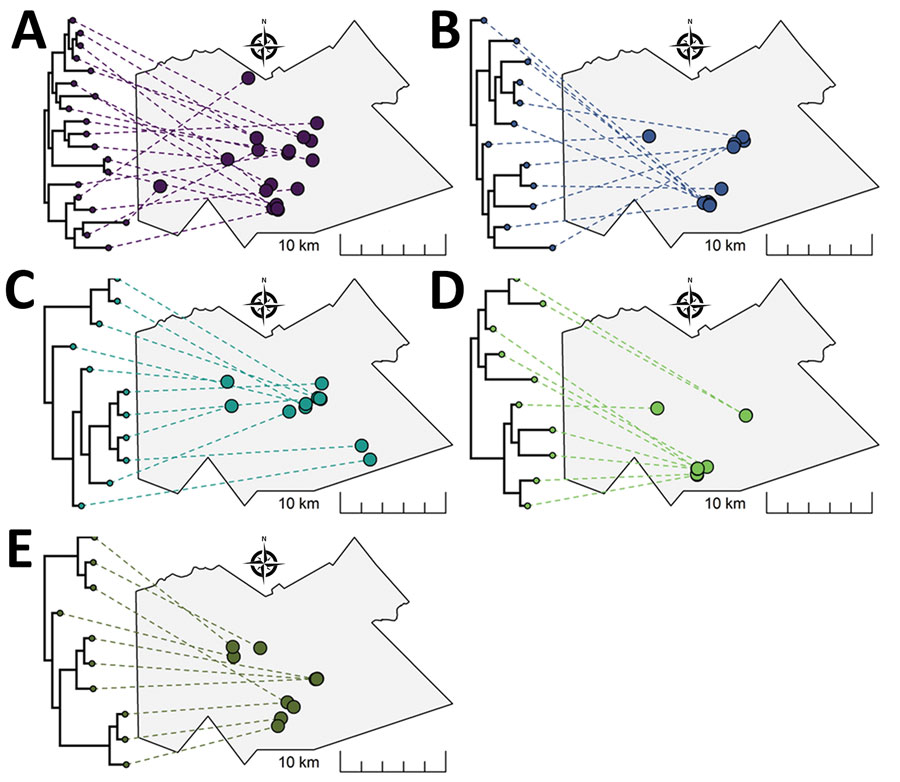Volume 29, Number 5—May 2023
Research
Use of High-Resolution Geospatial and Genomic Data to Characterize Recent Tuberculosis Transmission, Botswana
Figure 8

Figure 8. Representation of phylogenetic trees for Mycobacterium tuberculosis genotypic cluster groups A–E (≤5 single-nucleotide polymorphisms) projected onto geographic maps in study of high-resolution geospatial and genomic data to characterize recent tuberculosis transmission, Gaborone, Botswana, 2012–2016. The location of each M. tuberculosis isolate in the tree is displayed with a link drawn to its corresponding geographic location. Tree tips on the same bifurcating branches represent the most closely related isolates.
1These first authors contributed equally to this article.
2These senior authors contributed equally to this article.
Page created: January 18, 2023
Page updated: April 18, 2023
Page reviewed: April 18, 2023
The conclusions, findings, and opinions expressed by authors contributing to this journal do not necessarily reflect the official position of the U.S. Department of Health and Human Services, the Public Health Service, the Centers for Disease Control and Prevention, or the authors' affiliated institutions. Use of trade names is for identification only and does not imply endorsement by any of the groups named above.